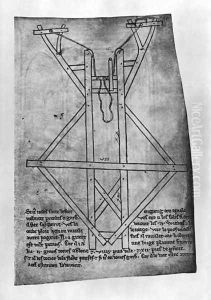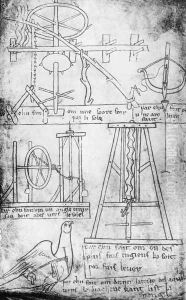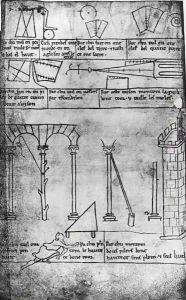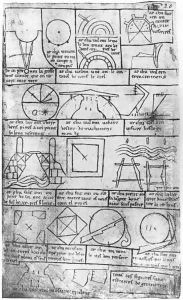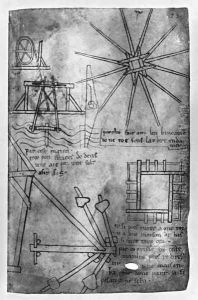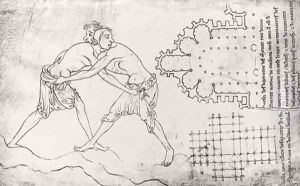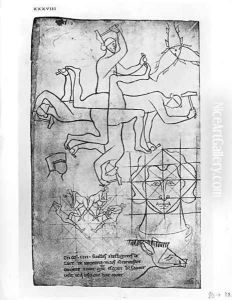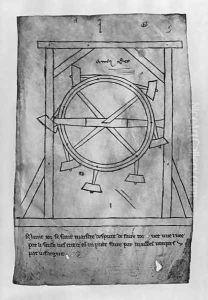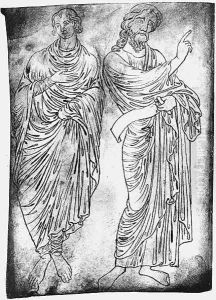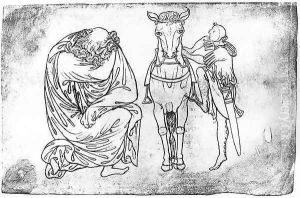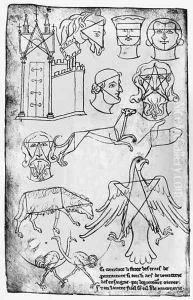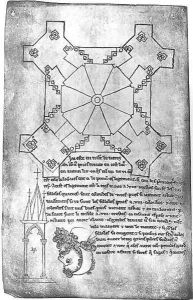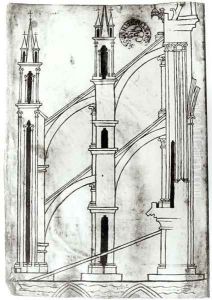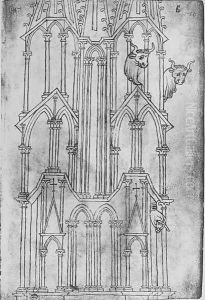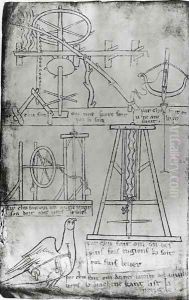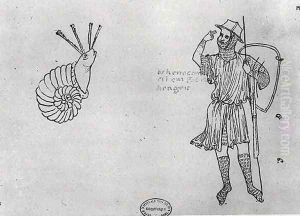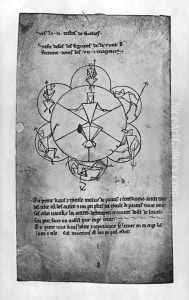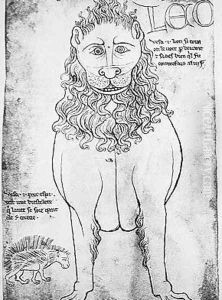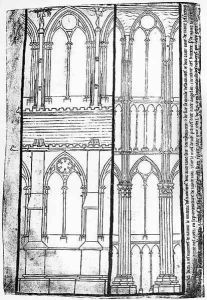Villard De Honnecourt Paintings
Villard de Honnecourt was a 13th-century artist from Picardy in northern France. He is known primarily for a surviving portfolio of his sketches and writings, which provides a unique glimpse into the techniques and aesthetics of Gothic architecture and art during his time. While not much is known about his life, his work suggests that he was not merely an artist but also an architect, or at least a master mason, who possessed considerable knowledge of geometry and architectural design.
Villard is believed to have been active between 1225 and 1250, a period that saw the flourishing of Gothic architecture in Europe. His sketchbook, known as the 'Portfolio of Villard de Honnecourt,' contains about 250 drawings on 33 parchment leaves. The subjects of these drawings are diverse, including architectural designs, mechanical devices, geometric figures, and studies of humans, animals, and plants. Villard's drawings of cathedrals and other buildings indicate that he traveled to various parts of Europe, including Reims, Chartres, and Lausanne, gathering knowledge and inspiration from different master builders.
The sketchbook not only showcases Villard's talent as a draftsman but also serves as a valuable source of information on medieval techniques and thought processes. It includes notes and commentaries on construction methods, design principles, and the practical challenges of building. One of the most intriguing aspects of his work is the depiction of various mechanical devices, such as lifting apparatuses and war machines, which reflect an interest in engineering and technology that was advanced for his time.
Villard de Honnecourt's influence extends beyond the realm of architecture. His sketches are among the earliest known studies to depict the human figure with attention to proportion and anatomy, predating the Italian Renaissance's focus on the human form. This indicates that European artists were engaged in empirical observation and naturalistic representation earlier than traditionally thought.
The exact date of Villard's death is not recorded, but his legacy persists through his sketches. The portfolio was rediscovered in the 19th century and has since been analyzed extensively by art historians and architects. It remains a critical document for understanding the skills, methods, and aesthetic values of Gothic art and architecture. Villard de Honnecourt's work is a testament to the ingenuity and creativity of the medieval period, and his sketchbook is prized for the window it provides into the medieval mind and the development of Western art.
